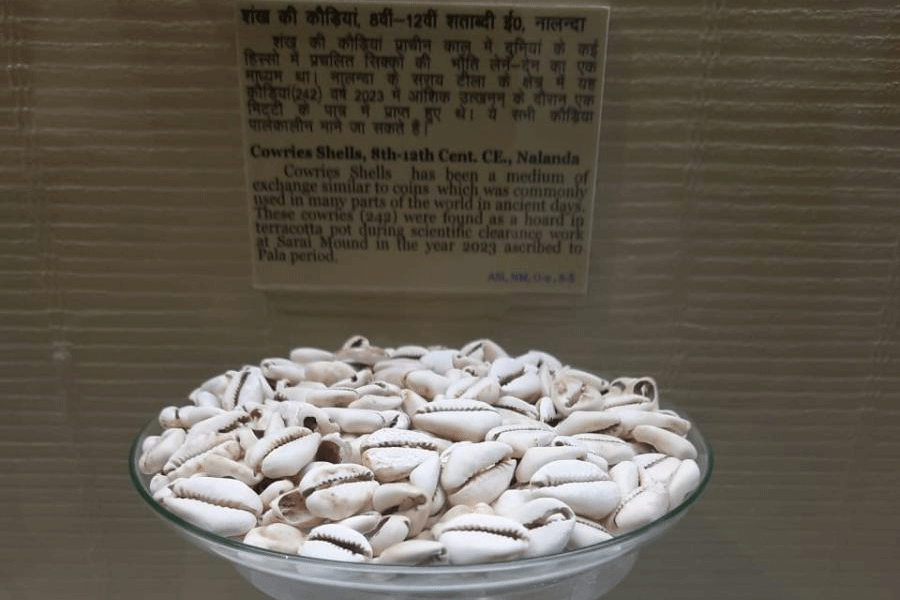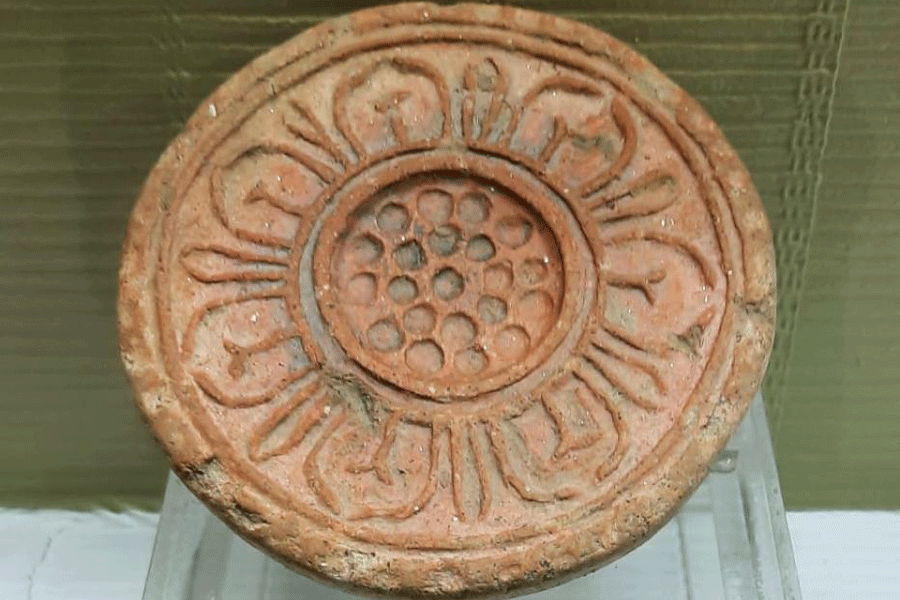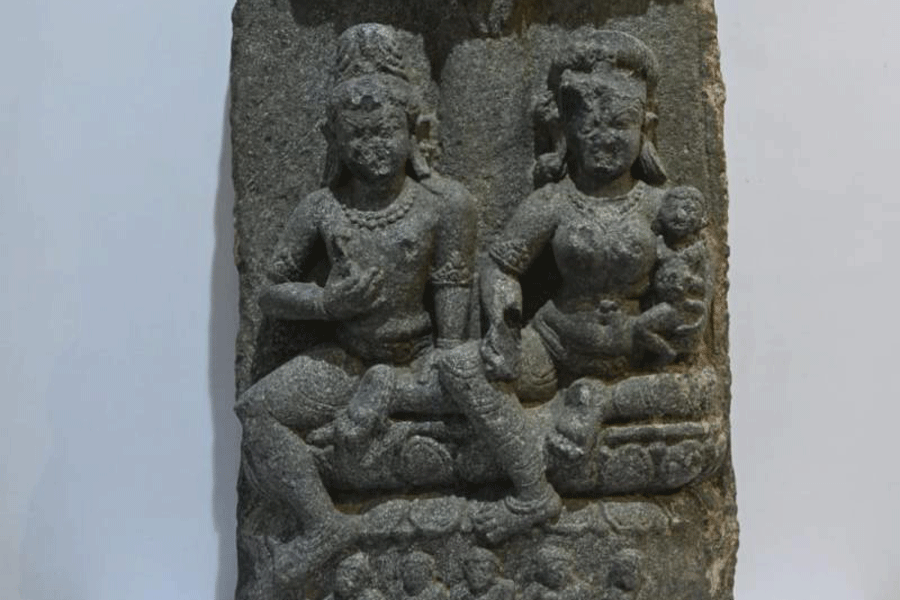The famous Nalanda Museum on Thursday revamped its display of antiquities on the occasion of International Museum Day to highlight the place as a confluence of religions, cultures, and knowledge systems in ancient times.
Though this has been done with a view to cater to domestic and foreign tourists, the keepers of the museum rued the fact that they were able to display just 2.3 per cent or 315 out of 13,473 artefacts lying with them due to space and security constraints.
Located opposite the ruins of the ancient Nalanda Mahavihara or university, accorded Unesco world heritage status in 2016, the museum, which belongs to the Archaeological Survey of India (ASI), houses antiquities found in excavations at the site and other places in Nalanda district.

A hoard of cowrie shells found in excavations at the ancient Nalanda University. The Telegraph
“We have tried to showcase that Nalanda, of which Rajgir (ancient Rajgriha, the seat of Magadh Empire) is a part, was a thriving place since prehistoric times. Accordingly, we have displayed Paleolithic stone tools like cleavers, points, cores and flakes that are anywhere between five lakh to two lakh years old,” Nalanda Museum in-charge Shanker Sharma told The Telegraph.
“Northern Black Pottery Ware (NBPW) that have an astonishing shine and date back to the times of the Buddha and before have also been displayed. The ASI had discovered them during the excavations at the Maudgalyayana Stupa at Juafar Dih in 2004-05,” Sharma added.

The Lotus terracotta seal of the ancient Nalanda University. The Telegraph
Seventh-century idols of Jain Tirthankara Mahavir’s parents, a ninth-century idol of the Buddha in Dhammachakra Pravartana pose, an 11th-century stone panel showing the Buddha in various poses and also wearing a crown, a one of its own kind terracotta lotus seal of the ancient Nalanda university dating back to eighth to 12th century and found in January this year have also been put on the display.
Various other rare idols, like a 12-handed Avalokitesvara, a bronze Jain Tirthankara Rishabhdeo, Vishnu, Ganesha, Shiva-Parvati, Kuber, Saraswati, Surya and others also form a part of the collection put out for the visitors.

The parents of Lord Mahavira. The Telegraph
A chain mail (armour), a large bronze quiver, various kinds of daggers, a hoard of 242 cowries, ivory dice, sandalwood slippers, and idols symbolic of tantra form some of the interesting objects on display. They indicate that archery, fighting skills, martial arts, trade practices, and tantra rituals could have been taught at the ancient Nalanda University.
“There are some objects of extraordinary value, like a gold coin of Gupta emperor Kumargupta-I (414– 455 AD), the founder of the ancient Nalanda University and a wide range of coins belonging to other rulers, which we are unable to display due to security concerns and space constraints,” Sharma added.
There have been theft of antiquities at the Nalanda Museum in the past and some of the stolen treasures were never recovered.
A priceless bronze statue of Lord Buddha (10th–12th century AD), stolen from the museum in 1961, was traced w handed back by Scotland Yard to the Indian High Commission in 2018. It returned to India but is gathering dust with the ASI in Delhi till now, instead of arriving back to the place from where it was pilfered. Another similar bronze statue is still missing.
“We are planning to create a new space for a thematic display of antiquities found from Nalanda Mahavihara and places around it,” ASI Patna circle superintendent Gautami Bhattacharya said after inaugurating the revamped display.
Sources in the ASI said that there are plans to construct a bigger and better museum building to house the artefacts. Its officials are currently working on its design and cost.
Once ready, it will prove to be a boon for Nalanda and around 2 lakh people who visit the museum every year.










